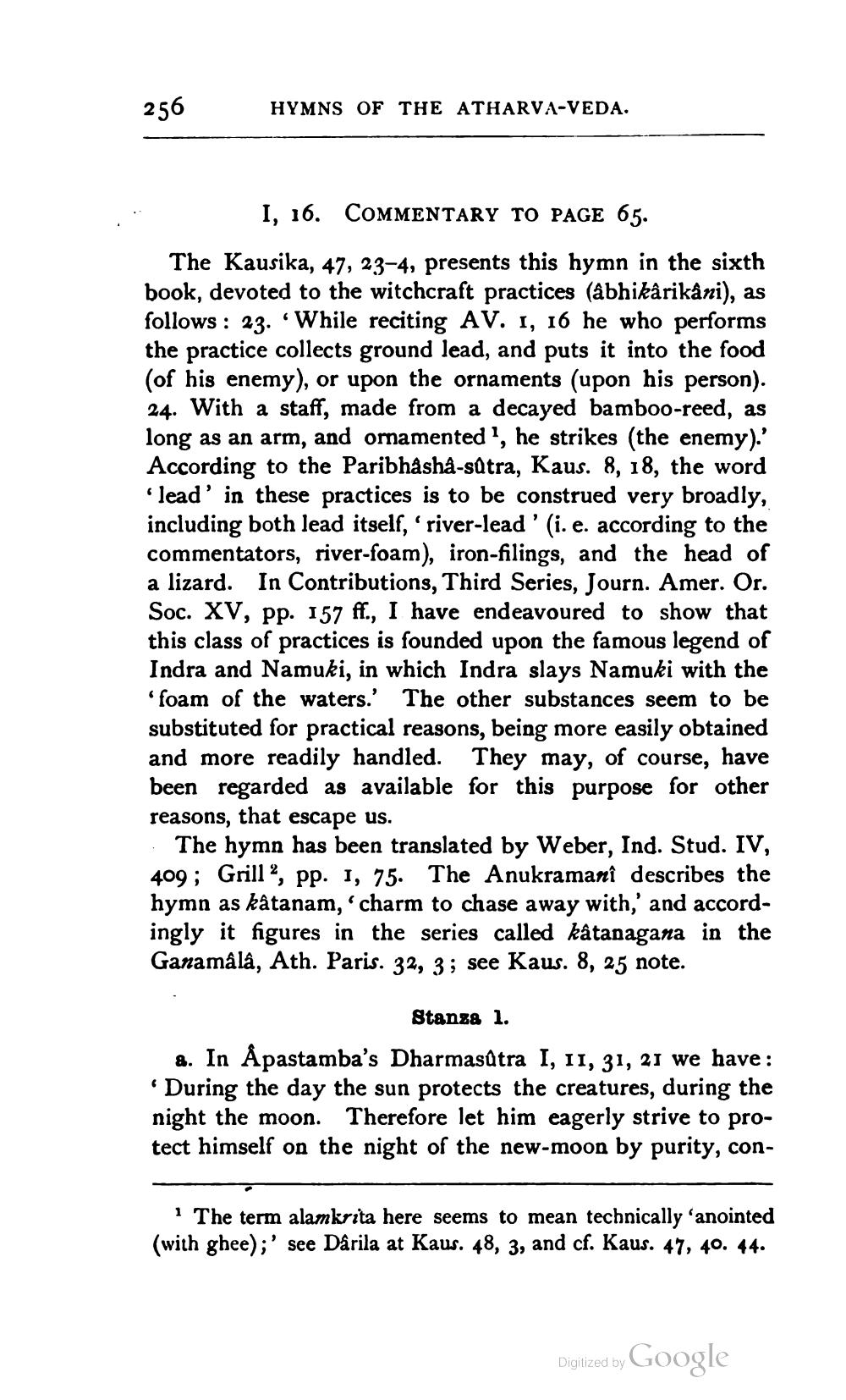________________
256
HYMNS OF THE ATHARVA-VEDA.
I, 16. COMMENTARY TO PAGE 65.
The Kausika, 47, 23-4, presents this hymn in the sixth book, devoted to the witchcraft practices (abhikârikani), as follows : 23. "While reciting AV. 1, 16 he who performs the practice collects ground lead, and puts it into the food (of his enemy), or upon the ornaments (upon his person). 24. With a staff, made from a decayed bamboo-reed, as long as an arm, and omamented”, he strikes (the enemy).' According to the Paribhasha-stra, Kaus. 8, 18, the word
lead' in these practices is to be construed very broadly, including both lead itself, river-lead' (i.e. according to the commentators, river-foam), iron-filings, and the head of a lizard. In Contributions, Third Series, Journ. Amer. Or. Soc. XV, pp. 157 ff., I have endeavoured to show that this class of practices is founded upon the famous legend of Indra and Namuki, in which Indra slays Namuki with the 'foam of the waters. The other substances seem to be substituted for practical reasons, being more easily obtained and more readily handled. They may, of course, have been regarded as available for this purpose for other reasons, that escape us. · The hymn has been translated by Weber, Ind. Stud. IV, 409; Grill 4, pp. I, 75. The Anukramanî describes the hymn as kâtanam, charm to chase away with,' and accordingly it figures in the series called kâtanagana in the Ganamâlâ, Ath. Paris. 32, 3 ; see Kaus. 8, 25 note.
Stanza 1. 8. In Åpastamba's Dharmasútra I, 11, 31, 21 we have: During the day the sun protects the creatures, during the night the moon. Therefore let him eagerly strive to protect himself on the night of the new-moon by purity, con
The term alamkrita here seems to mean technically 'anointed (with ghee); ' see Darila at Kaus. 48, 3, and cf. Kaus. 47, 40. 44.
Digized by Google




